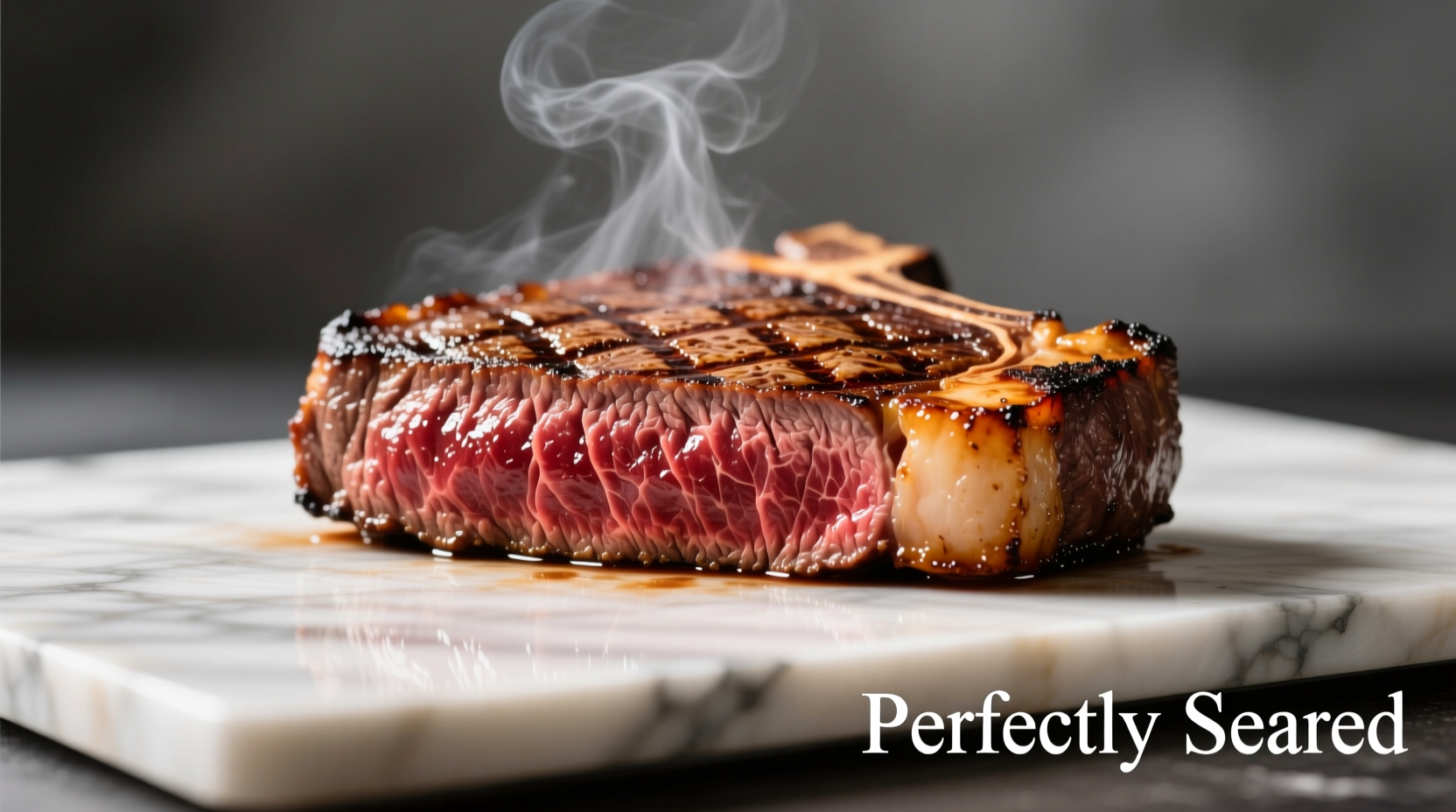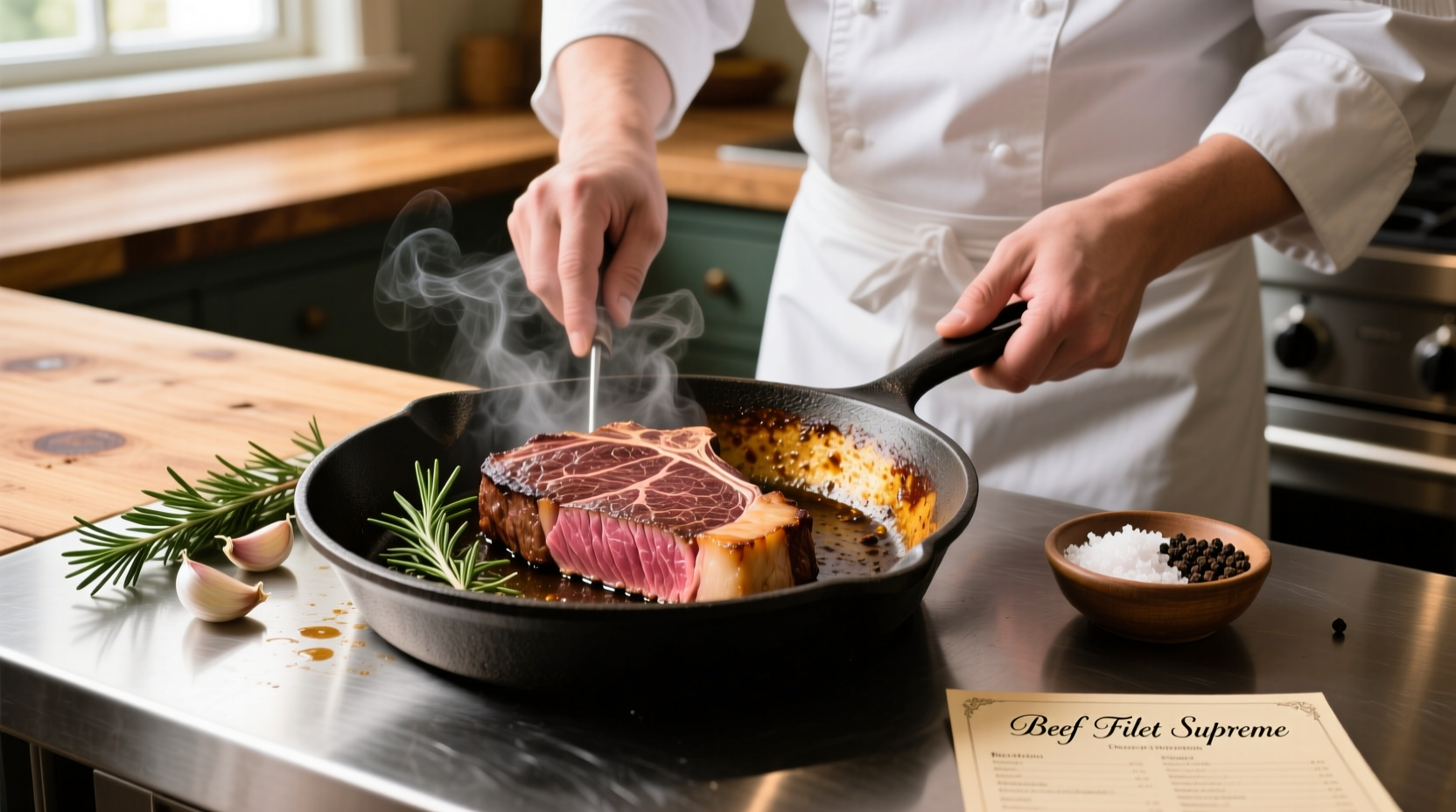The perfect beef filet requires bringing the steak to room temperature (30-60 minutes), seasoning generously with salt and pepper, searing in a hot cast-iron skillet (400°F/204°C) for 2-3 minutes per side, finishing in a 400°F oven to reach your desired internal temperature (125°F for rare, 135°F for medium-rare), then resting for 10 minutes before slicing. This method ensures a beautifully caramelized crust with tender, evenly cooked interior.
Mastering the Art of Beef Filet: From Selection to Serving
Nothing impresses like a perfectly cooked beef filet, but achieving restaurant-quality results at home requires understanding the science behind this delicate cut. As a culinary professional with extensive experience teaching home cooks professional techniques, I've seen countless home chefs struggle with this premium cut. The good news? With the right approach, you can consistently create a tender, flavorful filet that rivals any steakhouse.
Why Beef Filet Demands Special Attention
Beef filet (also called tenderloin) comes from the psoas major muscle along the cow's spine—a part that gets minimal exercise, making it exceptionally tender but lower in fat than other cuts like ribeye. This lack of marbling means filet requires precise temperature control; overcooking by just 5°F can transform it from succulent to dry. According to USDA Food Safety and Inspection Service guidelines, the minimum safe internal temperature for beef steaks is 145°F, but culinary professionals typically recommend lower temperatures for optimal texture in premium cuts like filet.

Your Complete Beef Filet Preparation Timeline
Understanding the complete preparation process helps avoid common timing mistakes. This visual timeline shows the critical path from refrigerator to plate:
| Stage | Time Required | Critical Actions |
|---|---|---|
| Preparation | 30-60 minutes before cooking | Remove from refrigerator, trim excess fat if desired, season generously with coarse salt and freshly ground pepper |
| Searing | 4-6 minutes | Heat cast-iron skillet to 400°F, add high-smoke point oil, sear 2-3 minutes per side until deep golden brown crust forms |
| Oven Finishing | 5-12 minutes | Transfer skillet to preheated 400°F oven until reaching target internal temperature |
| Resting | 8-10 minutes | Transfer to cutting board, tent loosely with foil, allow juices to redistribute |
Step-by-Step Cooking Process: The Professional Approach
Selecting Your Filet
Choose center-cut filet mignon steaks approximately 1.5-2 inches thick for optimal cooking control. Look for bright red color with fine marbling—avoid grayish hues which indicate age. USDA Prime grade offers the best marbling, but Choice grade works well if you're careful with cooking temperatures. The American Meat Science Association confirms that thickness consistency is more critical than grade for achieving even cooking in tenderloin cuts.
Temperature Guide: The Key to Perfect Doneness
Invest in an instant-read thermometer—it's the only reliable way to achieve your desired doneness. Here's the professional temperature guide:
| Doneness Level | Internal Temperature | Visual Indicators | Texture When Pressed |
|---|---|---|---|
| Rare | 120-125°F (49-52°C) | Bright red center, warm throughout | Very soft, yields easily |
| Medium-Rare | 130-135°F (54-57°C) | Pink center, slightly warm red | Soft with slight resistance |
| Medium | 140-145°F (60-63°C) | Light pink center, warm red | Firm with moderate resistance |
| Medium-Well | 150-155°F (66-68°C) | Slightly pink center, mostly gray-brown | Firm with considerable resistance |
Remember that temperature will rise 5-10°F during resting (carryover cooking), so remove your filet from heat 5°F below your target temperature. For medium-rare, pull at 130°F.
Avoiding Common Filet Cooking Mistakes
Three critical errors ruin more filets than anything else:
- Skipping the room temperature step - Cold meat from the refrigerator causes uneven cooking. Allow 30-60 minutes at room temperature before cooking.
- Overcrowding the pan - Cook one filet at a time in an appropriately sized skillet to ensure proper searing rather than steaming.
- Cutting too soon after cooking - Resting for 8-10 minutes allows juices to redistribute; slicing immediately causes precious juices to escape.
Enhancing Flavor Without Overpowering the Beef
Filet's delicate flavor benefits from simple enhancements. Try these professional techniques:
- Add aromatics during the last minute of searing: fresh thyme sprigs and crushed garlic cloves
- Baste with butter, rosemary, and thyme during oven finishing for added richness
- Create a quick pan sauce using deglazed fond, beef stock, and a touch of Dijon mustard
According to Culinary Institute of America research, the Maillard reaction (browning) creates over 600 flavor compounds in properly seared beef, making high-heat searing essential for maximum flavor development in lean cuts like filet.
When Different Cooking Methods Make Sense
While the skillet-to-oven method works best for most home cooks, understanding alternative approaches helps in specific situations:
- Grilling: Best for thicker filets (2+ inches) when you want smoky flavor. Use two-zone fire with indirect heat after initial sear.
- Sous vide: Ideal for absolute precision but requires additional equipment. Cook at 130°F for 1-2 hours, then finish with intense sear.
- Reverse sear: Recommended for very thick cuts. Start in low oven (275°F) until 115°F internal, then sear at maximum heat.
Each method has specific temperature control requirements—the skillet-to-oven approach remains the most accessible for consistent results with standard 1.5-2 inch filets.
Serving Your Perfect Filet
Cut against the grain at a 45-degree angle using a sharp carving knife for maximum tenderness. Serve with simple accompaniments that complement rather than compete with the beef's flavor. Classic pairings include roasted potatoes, seasonal vegetables, and a full-bodied red wine like Cabernet Sauvignon. For sauce options, a classic béarnaise or simple red wine reduction enhances without overwhelming the delicate filet.
Troubleshooting Guide: Fixing Common Issues
- Problem: Gray band under crust - Solution: Ensure your pan is properly preheated to smoking point before adding the steak.
- Problem: Uneven cooking - Solution: Use filets of consistent thickness; consider butterflying thicker ends.
- Problem: Dry texture - Solution: Never exceed 140°F internal temperature for filet; always rest properly before slicing.
Frequently Asked Questions
Here are answers to the most common questions about cooking beef filet:
How long should I let my beef filet rest after cooking?
Rest your beef filet for 8-10 minutes—approximately 1 minute per 100 grams of meat. This resting period allows the muscle fibers to relax and reabsorb juices that would otherwise escape when sliced. For optimal results, tent loosely with foil to maintain temperature without steaming the crust.
Can I cook frozen beef filet directly?
While possible, cooking frozen filet yields inferior results. The exterior will overcook before the interior reaches proper temperature. For best results, thaw filet in the refrigerator for 24 hours, then bring to room temperature for 30-60 minutes before cooking. If you must cook from frozen, increase oven finishing time by 50% and monitor temperature closely.
What's the best oil for searing beef filet?
Use oils with high smoke points (400°F+) like avocado oil, refined canola oil, or grapeseed oil. Avoid extra virgin olive oil which smokes at lower temperatures. Professional chefs often combine a high-smoke point oil with a small amount of butter added during the last minute of searing for enhanced flavor without burning.
Why is my filet tough despite careful temperature control?
Toughness in properly cooked filet usually results from slicing with (rather than against) the grain. Filet has a distinct grain pattern—identify the direction of muscle fibers and cut perpendicular to them. Use a sharp knife and slice at a 45-degree angle for maximum tenderness. Over-marinating in acidic ingredients can also cause texture issues in this delicate cut.











 浙公网安备
33010002000092号
浙公网安备
33010002000092号 浙B2-20120091-4
浙B2-20120091-4